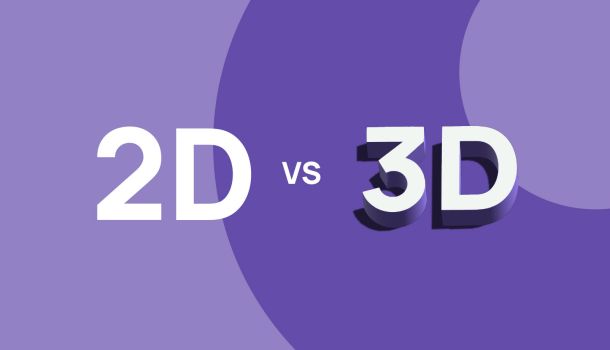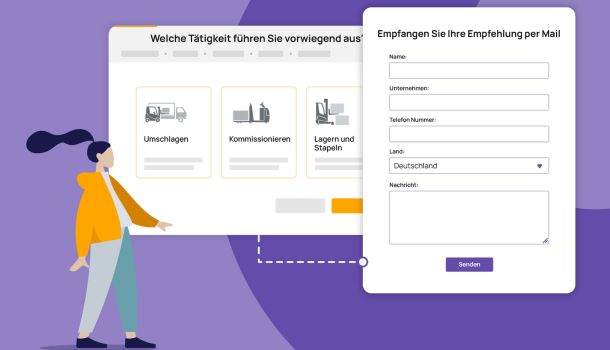Make or Buy Guided Selling – Which is Better?
08.10.2024
Melissa Hartmann
Share post
You might currently be facing the "Make or Buy" decision yourself. But which is better: developing your own Guided Selling Software or opting for a proven provider solution?
Both options have their advantages. Let's get a closer look at what those are!
Both options have their advantages. Let's get a closer look at what those are!
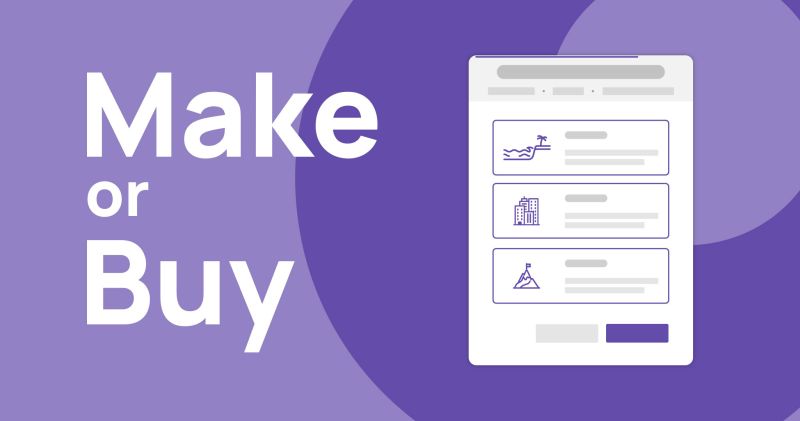
Develop In-house vs. Find a Provider
There are several criteria that play a crucial role in the "Make or Buy" decision. Below, we have compiled the most important ones for you:
- Internal Resources
- Time Investment
- Control
- Scalability
- Scope of Features
- Maintenance
- Costs
Internal Resources
An important requirement for developing software in-house is having employees with the appropriate qualifications. Additionally, several individuals are usually involved in the software development process. These team members will be unavailable as resources for day-to-day operations during the development period. Therefore, it makes sense to first assess whether the necessary personnel resources are available.
Opting for a Guided Selling provider offers the advantage of conserving important internal resources, allowing employees to continue focusing on day-to-day operations. A professional provider not only delivers the software but also assists with the planning, execution, and implementation of the Guided Selling solution.
Opting for a Guided Selling provider offers the advantage of conserving important internal resources, allowing employees to continue focusing on day-to-day operations. A professional provider not only delivers the software but also assists with the planning, execution, and implementation of the Guided Selling solution.
Time Investment
Developing software in-house requires a significant time investment. Therefore, thorough planning is essential to estimate the project's duration and the resources needed as accurately as possible. It is also important to allocate a testing period for the new software to address any bugs or issues that may arise.
In contrast, a provider's solution already exists and can typically be implemented and put into operation in a short amount of time. Additionally, the provider can offer a very accurate estimate of the time needed for project implementation based on feedback from other customers.
In contrast, a provider's solution already exists and can typically be implemented and put into operation in a short amount of time. Additionally, the provider can offer a very accurate estimate of the time needed for project implementation based on feedback from other customers.
Control
A significant advantage of in-house development is that you have full control over the project. You know your problems best and can tailor the software to address them effectively. Additionally, you can share new ideas or change requests with your developers at any time and implement them quickly.
Choosing a Guided Selling provider naturally involves a certain degree of dependency. Especially with custom solutions, you may not be able to intervene or make adjustments yourself. However, some providers also offer so-called self-service tools.
Choosing a Guided Selling provider naturally involves a certain degree of dependency. Especially with custom solutions, you may not be able to intervene or make adjustments yourself. However, some providers also offer so-called self-service tools.
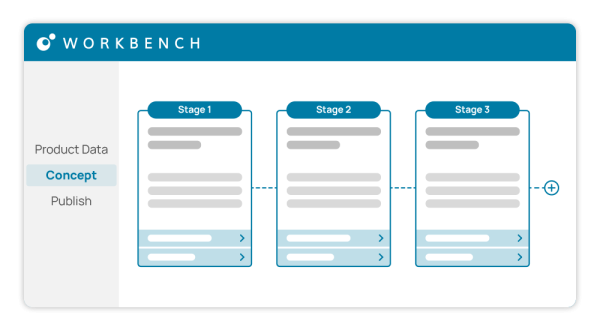
For example, with the excentos Workbench, you can create, edit, and publish digital consulting solutions on your own—without any programming knowledge.
Scalability
Once an in-house solution has proven effective, many companies want to scale it. This means making the solution available for multiple product categories or in several languages. However, scaling with in-house development also entails additional development effort. This means that internal resources may be required again to further deploy the solution.
From our own experience, we can say that some of our clients started with an in-house solution but later opted for a professional solution due to the challenges they faced when scaling. After all, the Guided Selling solutions from established providers are designed to accommodate various assortments and ensure availability in multiple languages.
From our own experience, we can say that some of our clients started with an in-house solution but later opted for a professional solution due to the challenges they faced when scaling. After all, the Guided Selling solutions from established providers are designed to accommodate various assortments and ensure availability in multiple languages.

Therefore, if you want to roll out your solution internationally, choosing a professional provider is typically advantageous.
Scope of Features
When you develop software in-house, you also have the freedom to decide which features you want to implement. However, developing new features takes time. As a result, in-house solutions are often equipped with more basic functionalities initially compared to established provider solutions.
On the other hand, provider software may include features that you do not need but still have to pay for. However, vendor software is often suitable for more specialized application scenarios.
On the other hand, provider software may include features that you do not need but still have to pay for. However, vendor software is often suitable for more specialized application scenarios.
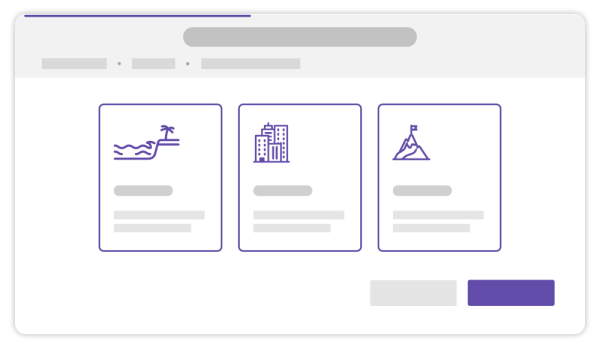
For example, a professional Guided Selling Software is designed to account for complex dependencies and create edge cases such as product sets and bundles.
Maintenance
Software should be regularly maintained to ensure smooth operation and minimize security risks. This means that long-term internal resources need to be allocated for the maintenance of an in-house solution.
In contrast, if you opt for a provider's software solution, you won't need to worry about maintenance. Support from the provider, regular security updates, and new features are typically included in the service package.
In contrast, if you opt for a provider's software solution, you won't need to worry about maintenance. Support from the provider, regular security updates, and new features are typically included in the service package.
Costs
The costs for an in-house solution consist of personnel expenses required for the development and maintenance of the software. Since it can be difficult to estimate how long it will take to complete the software, calculating the costs for an in-house solution can be more challenging. However, the advantage is that you do not have to pay ongoing hosting or licensing fees.
If you choose a Guided Selling provider, you should anticipate monthly licensing fees and optional service packages. However, these costs can be effectively incorporated into your long-term planning.
If you choose a Guided Selling provider, you should anticipate monthly licensing fees and optional service packages. However, these costs can be effectively incorporated into your long-term planning.
Make or Buy Comparison
| Make | Buy | |
|---|---|---|
Resources | Employee resources required | Internal resources are conserved |
Time Investment | Project scope is difficult to estimate in advance | Short-term implementation is possible |
Control | Complete control in-house | Dependency on the provider |
Scalability | Associated with additional effort | International rollout possible |
Scope of features | Customizable | Generally has significantly more features |
Maintenance | Employee resources required | Internal resources are conserved |
Costs | Short-term costs | Long-term costs |
Conclusion
Make or Buy – What is really worth it? Our conclusion is: If a very simple Guided Selling solution suffices for your needs, it can indeed be worthwhile to start with an in-house solution. Of course, this assumes that you have the necessary employee resources available.
However, in-house solutions quickly reach their limits as the product range becomes more complex, international rollouts are planned, or specialized features are required. Additionally, the implementation tends to take significantly longer.
From our own experience, we can say that the advantages of a proven Guided Selling solution significantly outweigh the drawbacks for our clients. Fast implementation, high scalability, established recommendation behavior, a wide range of features, and continuous software development are decisive reasons in favor of opting for a provider solution.
However, in-house solutions quickly reach their limits as the product range becomes more complex, international rollouts are planned, or specialized features are required. Additionally, the implementation tends to take significantly longer.
From our own experience, we can say that the advantages of a proven Guided Selling solution significantly outweigh the drawbacks for our clients. Fast implementation, high scalability, established recommendation behavior, a wide range of features, and continuous software development are decisive reasons in favor of opting for a provider solution.
Contact Us Now
Would you like to assist your customers with a Guided Selling solution? Then get in touch with us; we would be happy to advise you!
